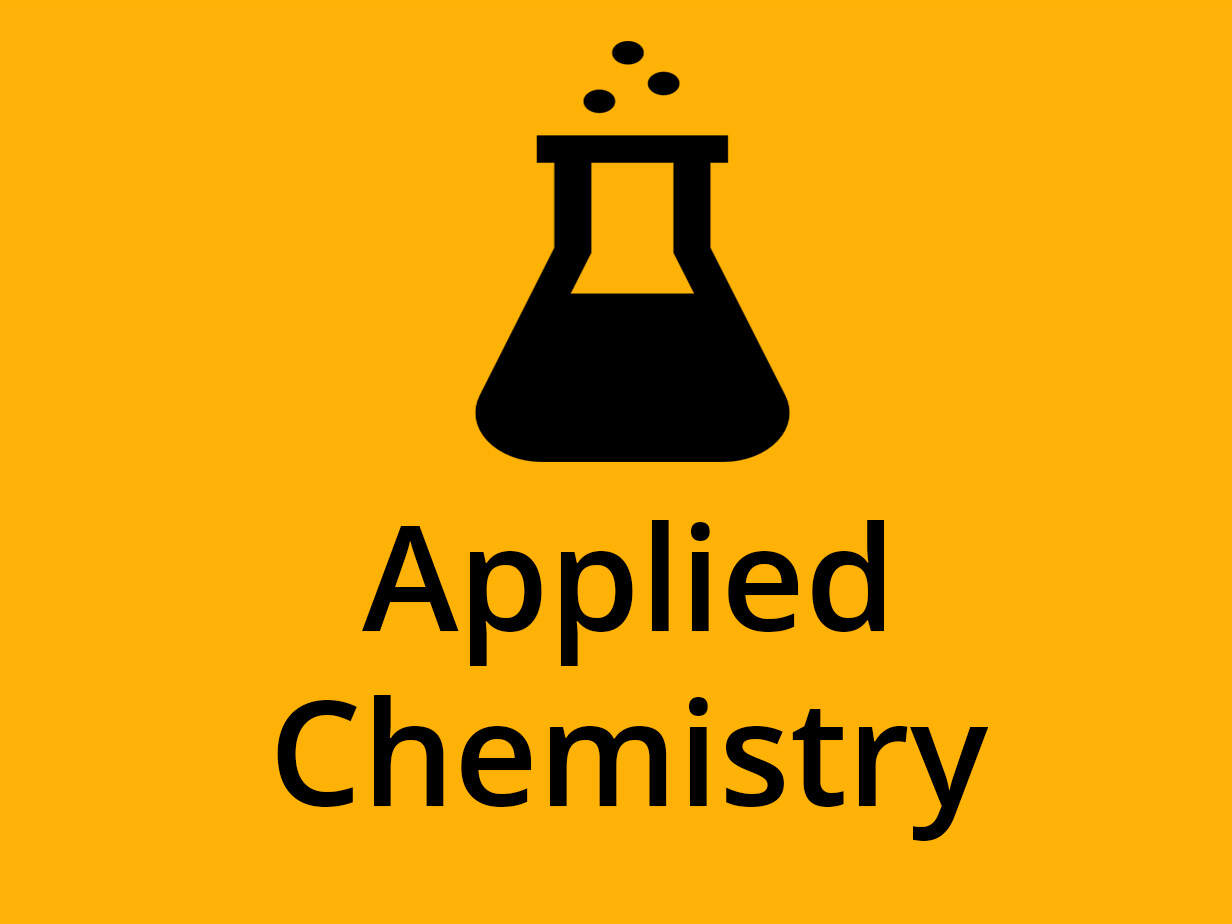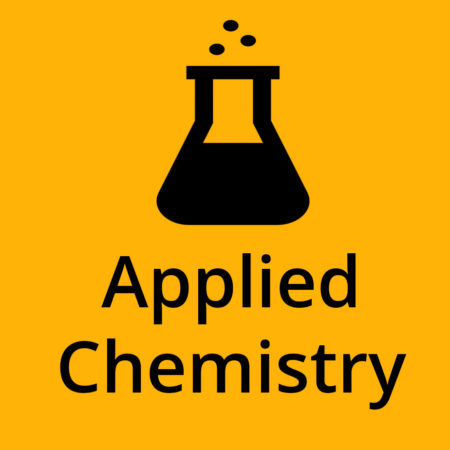Engineering Chemistry [RTU]
Free

-
Water
-
Organic Fuels
- Introduction to Fuels
- Knocking in Fuels
- Anti Knocking in Fuels
- Gasoline & its Refining Steps in Fuels
- Cracking of Petroleum 01
- Cracking of Petroleum 02
- Cracking of Petroleum 03
- Refining of Petroleum
- Bio-diesel in Fuels
- Liquid Fuels
- Ultimate Analysis Numerical 01
- Ultimate Analysis Numerical 02
- Ultimate Analysis Numerical 03
- Cetane Number
- Numerical Combustion in Fuels
- HCV or GCV and LCV or NCV in Fuels
-
Corrosion and its Controls
- Corrosion Part 1
- Corrosion Part 2
- Corrosion Part 3
- Dry Corrosion Part 1
- Dry Corrosion Part 2
- Wet Corrosion Part 01
- Wet Corrosion Part 02 with difference
- Different Types of Corrosion Part 01
- Different Types of Corrosion Part 02
- Different Types of Corrosion Part 03
- Factors Affecting Corrosion
- prevention and control corrosion part 1
- prevention and control corrosion part 2
- prevention and control corrosion part 3
- prevention and control corrosion part 4
Engineering Chemistry [RTU]
Engineering Chemistry is a semester 2 subject in the first year of engineering at Mumbai University. Objectives for the subject Engineering Chemistry to provide the necessary background in applied chemistry relevant to chemical industries.
To provide exposure in conducting experiments and interpret and report the results in a professional format. Outcomes for the subject Applied Chemistry– II Learner will be able to Identify types of corrosion and factors affecting it related to problems affecting all industries. Identify different types of corrosion control methods to study corrosion control in various industries. Apply the knowledge of different types of fuels, including their production and refining methods and combustion mechanisms. Illustrate the composition and properties of different types of alloys and the process of powder metallurgy. Illustrate principles of green chemistry. Illustrate properties and applications of different types of composite materials.
Module Corrosion consist of the following subtopics Introduction: Types of Corrosion- (I) Dry or Chemical Corrosion-i) Due to oxygen ii) Due to other gases (II) Wet or Electrochemical corrosion- Mechanism i) Evolution of hydrogen type ii) Absorption of oxygen. Types of Electrochemical Corrosion- Galvanic cell corrosion, Concentration cell corrosion (differential aeration), Pitting corrosion, Intergranular corrosion, Stress corrosion. Factors affecting the rate of corrosion- Nature of metal, the position of the metal in galvanic series, potential difference, overvoltage, the relative area of anodic and cathodic parts, purity of the metal, nature of the corrosion product, temperature, moisture, influence of pH, the concentration of the electrolytes. Methods to decrease the rate of corrosion Material selection, Proper designing, Use of inhibitors, Cathodic protection- i) Sacrificial anodic protection ii) Impressed current method, Anodic protection method, Metallic coatings- hot dipping- galvanizing and tinning, metal cladding, metal spraying, Electroplating, Cementation. Organic coatings – Paints (only constituents and their functions). Module Alloys consist of the following subtopics Introduction, purpose of making alloys, Ferrous alloys, plain carbon steel, heat-resisting steels, stainless steels (corrosion-resistant steels), the effect of the alloying element- Ni, Cr, Co, Mn, Mo, W, and V; Non-Ferrous alloys- Composition, properties and uses of- Alloys of Aluminium- i) Duralumin ii) Magnalium. Alloys of Cu- (I) Brasses-i) Commercial brass ii) German silver, (II) Bronzes- i) Gunmetal ii) High phosphorous bronze. Alloys of Pb- i) Wood’s metal ii) Tinmann’s solder. Powder Metallurgy- Introduction, (1)Methods of powder metal formation- i) Mechanical pulverization ii) Atomization iii) Chemical reduction iv) Electrolytic process v) Decomposition (2) Mixing and blending. (3) Sintering (4) Compacting- i) Cold pressing ii) Powder injection molding (iii) Hot compaction. Applications of powder metallurgy. Shape Memory Alloys- Definition, properties, and Uses.
Corrosion is a natural process that converts a refined metal into a more chemically stable form such as oxide, hydroxide, or sulfide. It is the gradual destruction of materials (usually a metal) by chemical and/or electrochemical reaction with their environment. Corrosion engineering is the field dedicated to controlling and preventing corrosion. In the most common use of the word, this means electrochemical oxidation of metal in reaction with an oxidant such as oxygen or sulfates. Rusting, the formation of iron oxides is a well-known example of electrochemical corrosion. This type of damage typically produces oxide(s) or salt(s) of the original metal and results in distinctive orange coloration. Corrosion can also occur in materials other than metals, such as ceramics or polymers, although in this context, the term “degradation” is more common. Corrosion degrades the useful properties of materials and structures including strength, appearance, and permeability to liquids and gases. A fuel is any material that can be made to react with other substances so that it releases energy as heat energy or to be used for work. The concept was originally applied solely to those materials capable of releasing chemical energy but has since also been applied to other sources of heat energy such as nuclear energy (via nuclear fission and nuclear fusion). Module Fuels consist of the following subtopics Definition, classification of fuels-solid, liquid and gaseous. Calorific value- Definition, Gross or Higher calorific value & Net or lower calorific value, units of heat (no conversions), Dulong’s formula & numerical for calculations of Gross and Net calorific values. Characteristics of good fuel. Solid fuels- Analysis of coal- Proximate and Ultimate Analysis with Significance and numerical. Liquid fuels- Crude petroleum oil, its composition and classification and mining (in brief). Refining of crude oil- i) Separation of water ii) Separation of ‘S’ & iii) Fractional Distillation with diagram and composition and uses table. Cracking- Definition, Types of crackingI) Thermal cracking (i) Liquid-phase thermal cracking (ii) Vapour phase thermal cracking. II) Catalytic cracking- (i) Fixed-bed catalytic cracking (ii) Moving-bed catalytic cracking. Advantages of Catalytic cracking. Petrol- Refining of petrol, unleaded petrol (use of MTBE), Catalytic converter, Power alcohol, Knocking, Octane number, Cetane number, Antiknocking agents. Combustion- Calculations for requirement of only oxygen and air (by weight and by volume only) for given solid & gaseous fuels. Biodiesel- Method to obtain Biodiesel from vegetable oils (Trans-esterification), advantage and disadvantages of biodiesel. Fuel cell- Definition, types and applications. Module Composite Materials consist of the following subtopics Introduction, Constitution- i) Matrix phase ii) Dispersed phase. Characteristic properties of composite materials. Classification- (A) Particle – reinforced composites- i) Large – particle reinforced composites ii) Dispersion – strengthened composites. (B) Fiber – reinforced composites- i) Continuous – aligned ii) Discontinuous – aligned (short)- (a) aligned (b) randomly oriented (C) Structural Composites- i) Laminates (ii) Sandwich Panels. Module Green Chemistry consist of the following subtopics Introduction, Twelve Principles of Green chemistry, numerical on atom economy, Conventional and green synthesis of Adipic acid, Indigo, Ibuprofen and Carbaryl. Green solvents (water,supercritical CO2) and products from natural materials.
References Books for the subject Applied Chemistry ‐II by Mumbai University are as follows Engineering Chemistry – Jain &Jain (DhanpatRai). Engineering Chemistry – Dara & Dara (S Chand). Engineering Chemistry – Wiley India (ISBN – 9788126519880). A Text Book of Engineering Chemistry – ShashiChawla (DhanpatRai). A Text Book of Green Chemistry – V.K. Ahluwalia (Springer).
Prepare For Your Placements: https://lastmomenttuitions.com/courses/placement-preparation/
![]()
/ Youtube Channel: https://www.youtube.com/channel/UCGFNZxMqKLsqWERX_N2f08Q
Follow For Latest Updates, Study Tips & More Content!
Course Features
- Lectures 38
- Quizzes 0
- Duration 50 hours
- Skill level All levels
- Language Hindi
- Students 73
- Certificate No
- Assessments Yes


![Thumbnails-1 Engineering Chemistry 1 [SPPU]](https://lastmomenttuitions.com/wp-content/uploads/2021/03/Engineering-Chemistry-1-SPPU-450x450.jpg)
